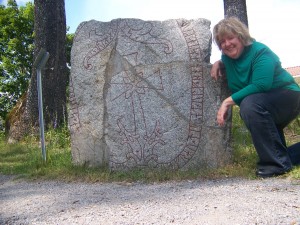Ph.D. student Jackie Bunting, currently ABD, has received a Doctoral Dissertation Improvement Grant from the National Science Foundation. She’ll spend three months in Suriname conducting fieldwork for her thesis, entitled “English to Sranan: An Assessment of Structural Similarities and Differences,” starting on October 18th. Hope you have an enjoyable, fruitful trip!
Also this year, Thomas Wier is continuing his Fulbright-Hayes fieldwork documenting dying Georgian dialects/languages, looking for evidence of different kinds of morphological blocking processes. While abroad, he has also given two talks: (1) The Case In and Across Languages conference in Helsinki, Finland: “Morphosemantax and case-marking in Georgian” and (2) The Tbilisi Forum on Language and Logic, in Bakuriani, Georgia, where he spoke about “Nonconfigurationality in Georgian.”

